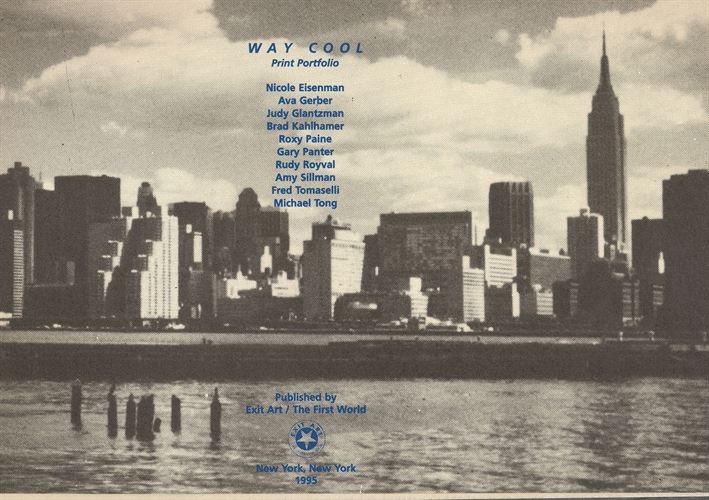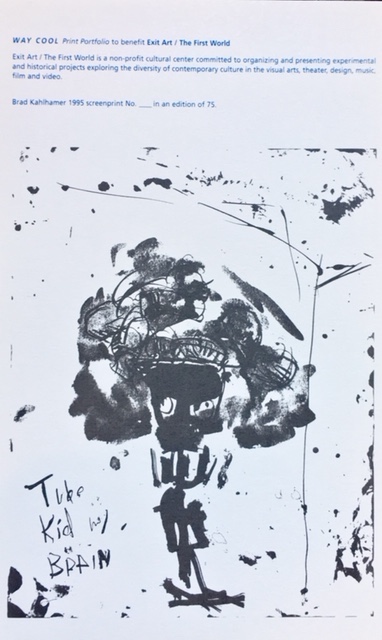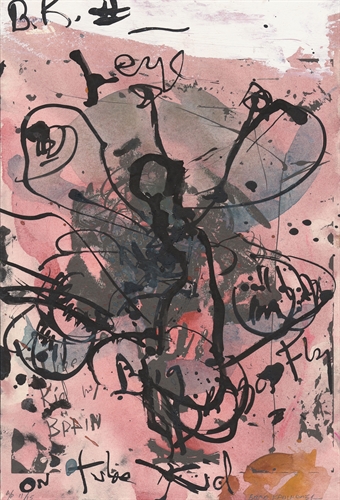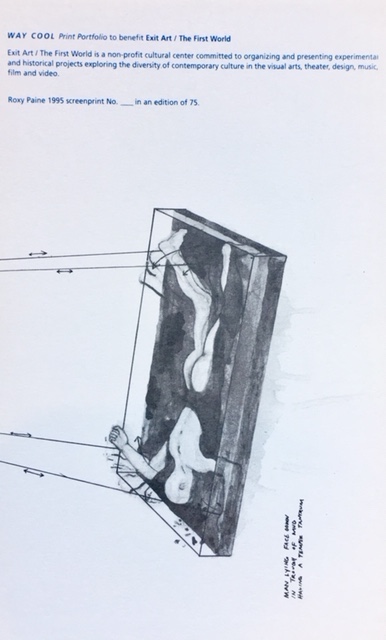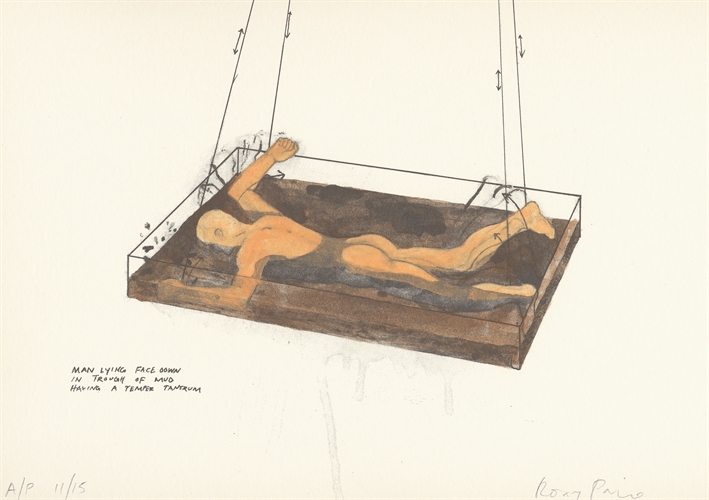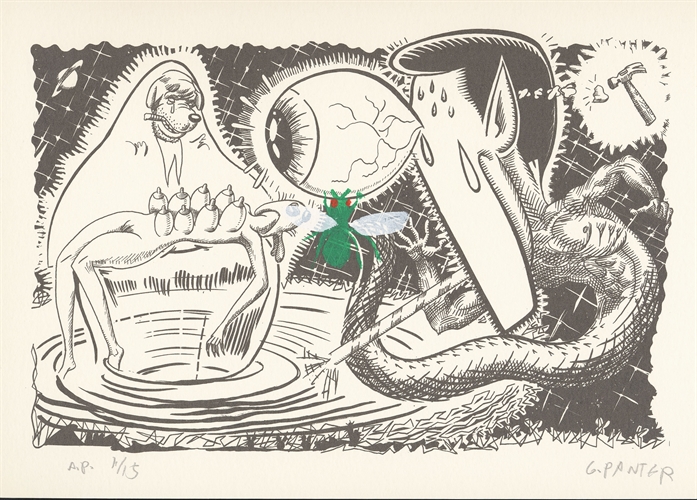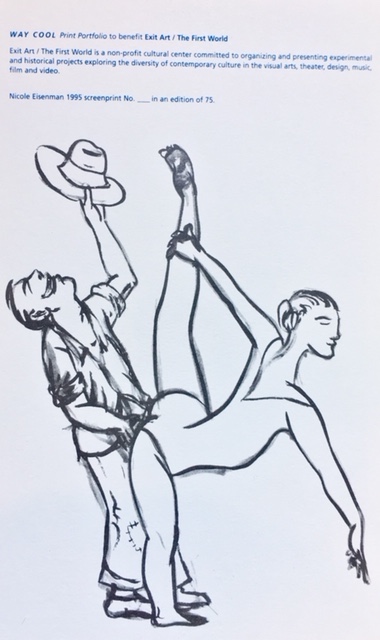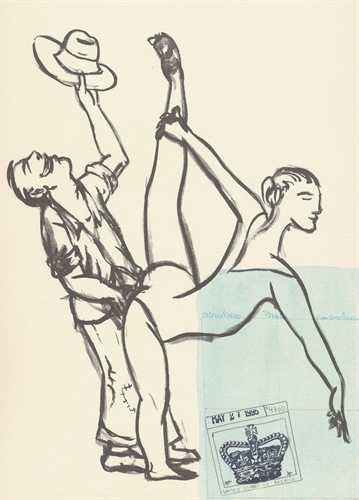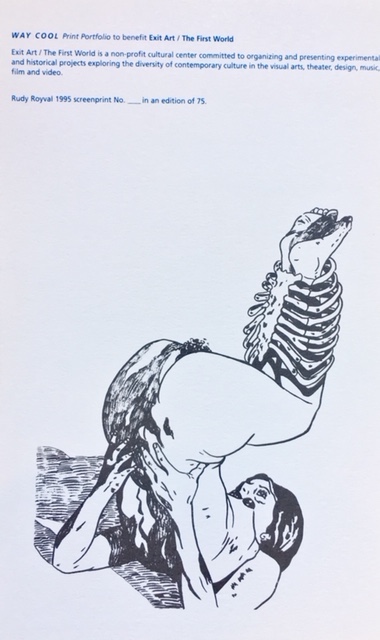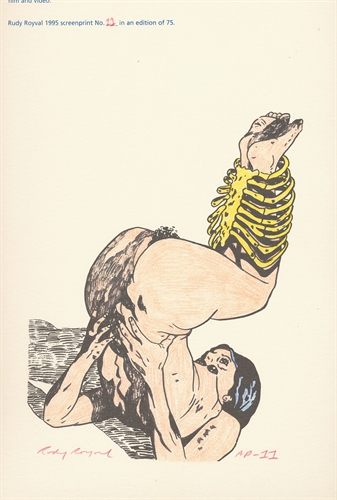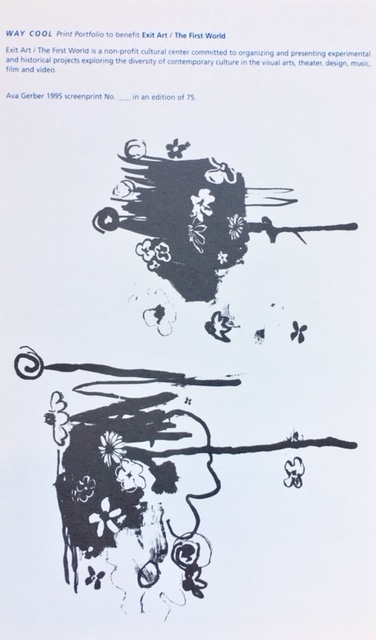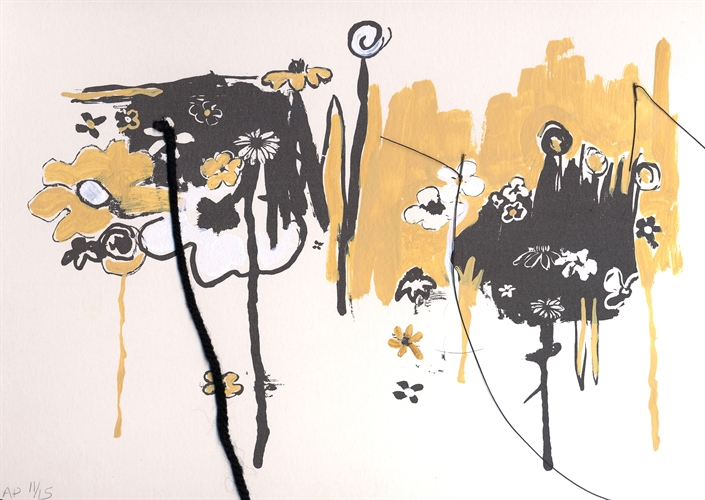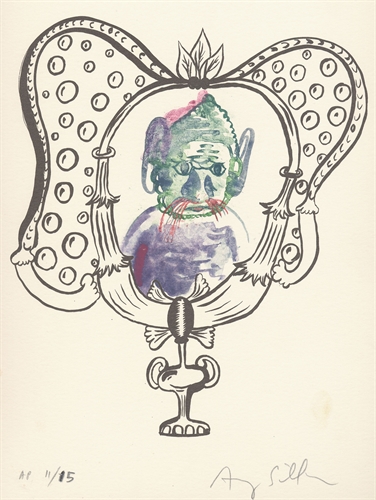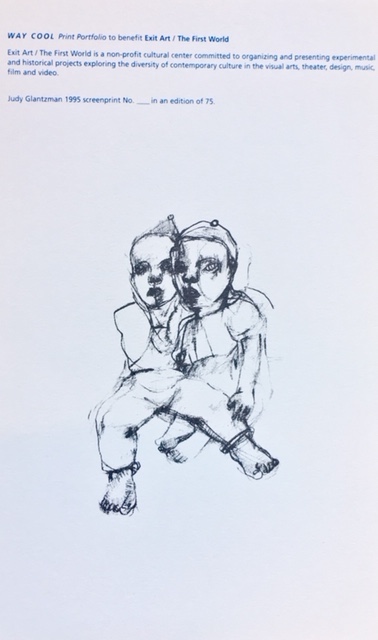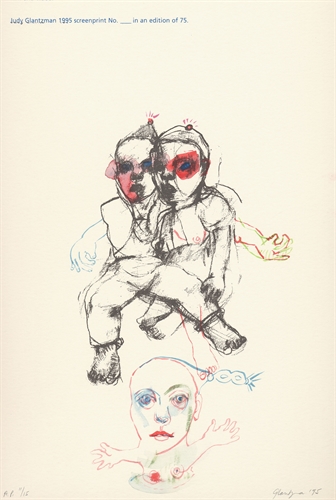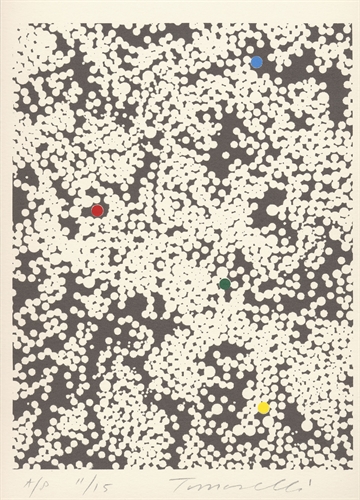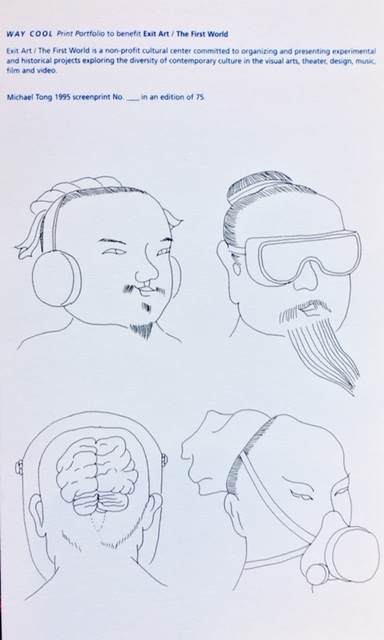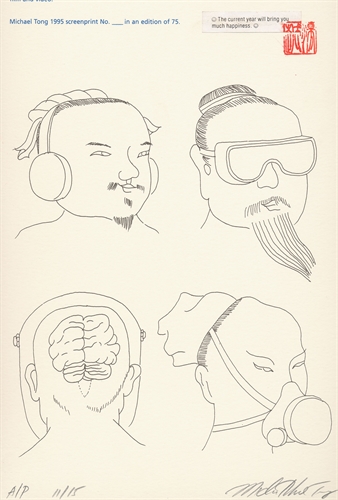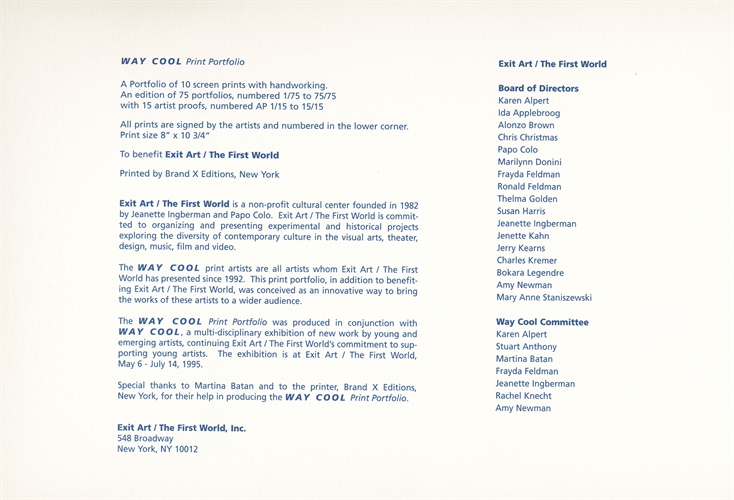Exit Art ‘Way Cool’ Print Portfolio 1995
Exit Art “Way Cool ” Print Portfolio of Ten Artists including Roxy Paine, Amy Sillman, Fred Tomaselli and Others , 1995
Screenprint, Mixed media without the original hand coloring
8 x 10.75 in. (20.32 x 27.3 cm.)
This portofilio is an original from the limited edition series, but had not been hand coloured by each of the artists.
It is basically what was given to each artist to individually hand colour. This is an ‘untouched’ portfolio, yet still an original from the series.
I have included before and after images to see how the page was presented to the artist, to see how each modified the images.
A hand painted series at current market value is appraised at USD$6-7,000.
VERBALLY APPRAISED AT USD$500 AS IS (unpainted)
Offering at USD$300
_____
Research Material:
https://onlineonly.christies.com/s/ipcny-15th-anniversary-benefit-auction/exit-art-first-world-23/27409
https://www.artnet.com/auctions/artists/various-artists/exit-art-way-cool-print-portfolio-of-ten-artists-including-roxy-paine-amy-sillman-fred-tomaselli-and-others
https://wmich.edu/art/exhibitions/archive/2013-14/the-gift.html
https://www.artspace.com/nicole_eisenman/way-cool
https://www.artsy.net/artwork/nicole-eisenman-better-face-fantasy-from-way-cool
_____
History of Exit Art
Exit Art was a non-profit art center in New York City whose mission was to provide a space for sharing the work of marginalized and under-represented artists, and help introduce those artists into the art world. Through the tireless efforts of co-founders Jeanette Ingberman and Papo Colo, Exit Art had a long 30-year run as a successful alternative art space. The art world suffered a great loss with Ingberman’s death and the subsequent closing of the space in 2012, however, their legacy lives on through the careers of the many artists they represented, and through these rich print portfolios which were commissioned by Exit Art over a period of many years. Throughout the years it was active (1982-2012), Exit Art gained the respect of the New York art community as an incubator helping a number of artists obtain recognition. The prints included in the Making Their Mark: Artist Prints from the UMCA Exit Art Portfolio Collection, a project made possible by the University Museum of Contemporary Art (UMCA) in collaboration with Hampshire College’s Institute for Curatorial Practice (ICP), provide us with inspiring glimpses into the kind of work that was nurtured and created at Exit Art’s experimental laboratory of contemporary art. From an illustration by David Byrne printed on a square of camouflage fabric, to a photographic print from Alfredo Jaar’s “Gramsci Project,” to a bizarre sketch by the artist collective, the Bruce High Quality Foundation, these prints provide a rich example of works by an impressive number of contemporary artists living and working in New York City at the turn of the 1st century.
Because Exit Art was not for profit, it relied on fund raising and donations to stay alive and to properly accommodate the artists it displayed. Through projects such as the Portfolios, Exit Art was able to support itself without acting as a commercial gallery – one of the major challenges for the gallery. Exit Art’s annual print project was founded in 1995, and aimed to foster the practice of contemporary printmaking and to “[match] younger and more established artists.” This marriage of emerging artists such as Rashid Johnson, with recognized artists such as Adam Helms, resulted in a ripe collection of contemporary works, which Exit Art then sold to public collections such as the Metropolitan Museum of Art, MoMA, the Whitney Museum, and a number of private collectors. These prints ultimately allowed Exit Art to work within a highly commercialized system without becoming a commercial gallery.
American, b. 1966
American, b. 1965
Working from the heart and driven by the body, Nicole Eisenman explores the human condition in her critically acclaimed, wide-ranging prints, paintings, drawings, and mixed-media works. As she explains: “I reflect a certain desire in my work, I want my work to be authentic and reflective of my body, what it’s interested in. The work is nothing if not feeling-based.” Influenced by Expressionism, Impressionism, and Pablo Picasso, Eisenman populates her works with emotionally resonant, cartoonish figures, formed out of exaggerated, painterly lines and intense colors. Full of pathos and dark humor, they are expressionistic portraits of herself and her friends, or imagined characters based on her critical observations of contemporary life and culture. Whether carousing at a beer garden or lounging dreamily, in groups or alone, Eisenman’s figures seem isolated and contemplative—products of our time, reflections of ourselves.
